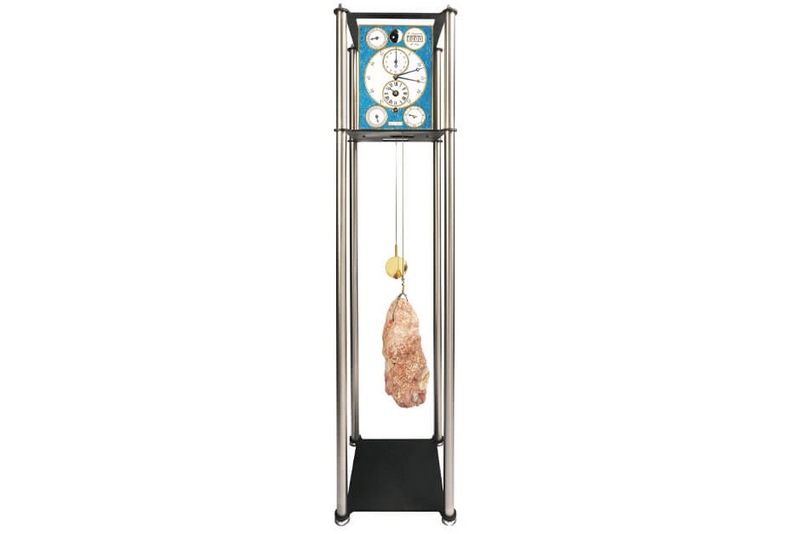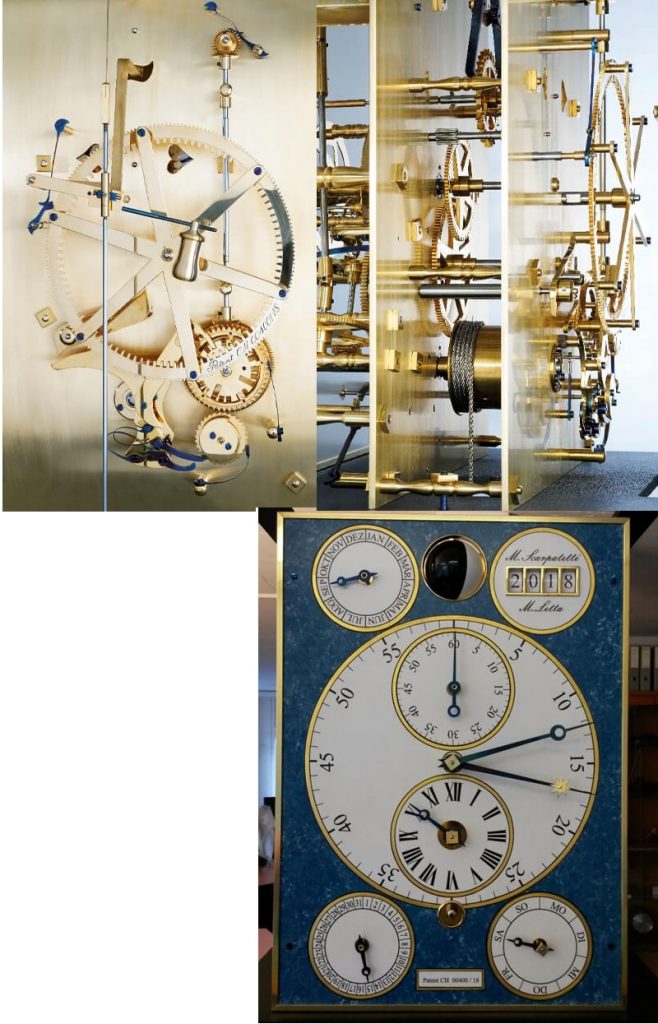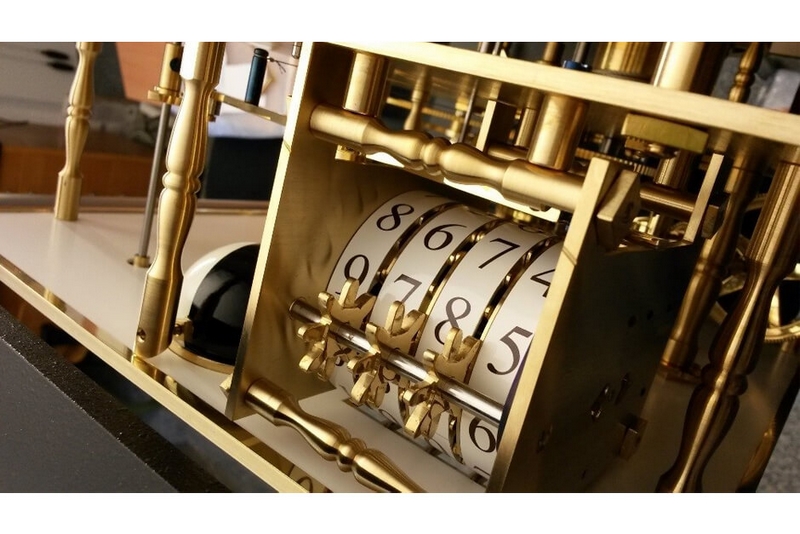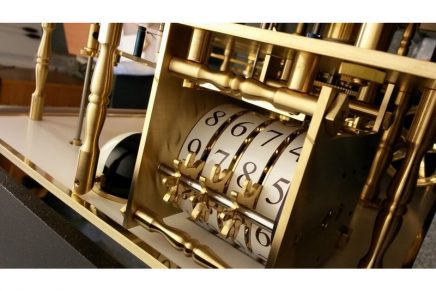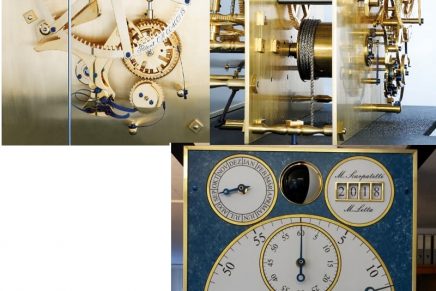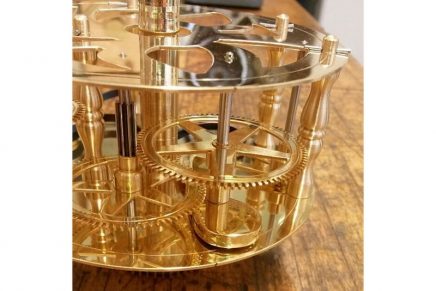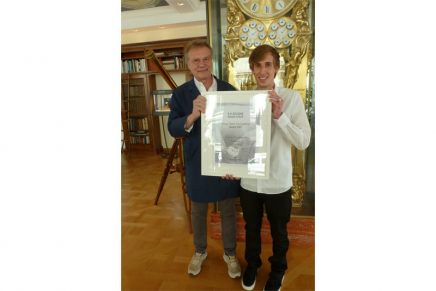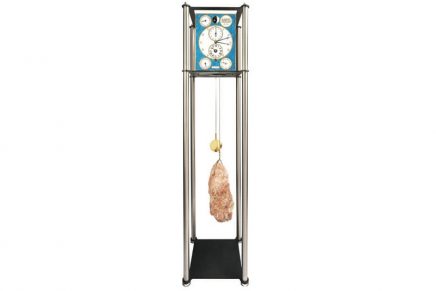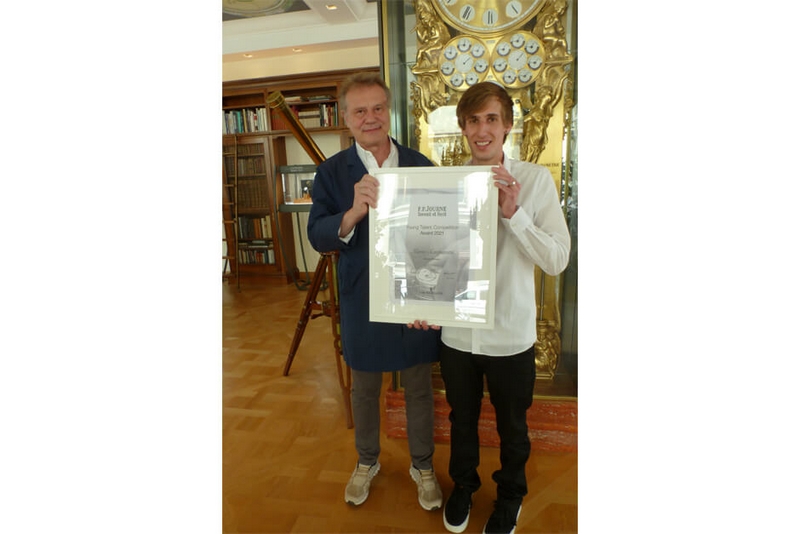
F.P.Journe Young Talent Competition Award goes to Mario Scarpatetti from Switzerland. ; F.P.Journe Young Talent Competition Winner 2021 ; photo @fpjourne.com
F.P.Journe Young Talent Competition Award goes to Mario Scarpatetti from Switzerland.
The owner of Mario Scarpatetti’s Kalender Perpeten clock never needs to adjust the date.
Since 2015, F.P.Journe Young Talent Competition is discovering the next generation of the most talented young
watchmaking apprentices in the world. The contest supports the watchmaking talents in their route to independence by identifying their achievements and putting them under the spotlight.
Swiss high-end watch manufacture F.P.Journe organizes the Young Talent Competition with the support of The Hour Glass, luxury watch retailer in the Asia Pacific region. Both Maisons aim to perpetuate and support the art of haute horology and cultivate the appreciation of extensive horological craftsmanship.
The selection criteria are based on technical achievement, the search for complexity in their realization, the quality of craftsmanship as well as their sense of design and aesthetics. Applicants must have independently designed and created a timepiece and/or technical construction. The 2021 Young Talent Competition winner receives a diploma and a CHF 20,000.- grant from The Hour Glass and F.P.Journe, which will allow him to purchase watchmaking tools or finance an horological project.
The jury of the Young Talent Competition 2021 is composed of key personalities from the international horological scene: Philippe Dufour, the greatest master of modern watchmaking, Swiss watchmaker and designer of watch movements Andreas Strehler, Giulio Papi (Co-founder and director Audemars Piguet ), Marc Jenni (Independent watchmaker & createur horologer), Michael Tay (The Hour Glass), Elizabeth Doerr (Watch journalist, editor-in-chief of @quillandpad) and François-Paul Journe (founder F.P.Journe).
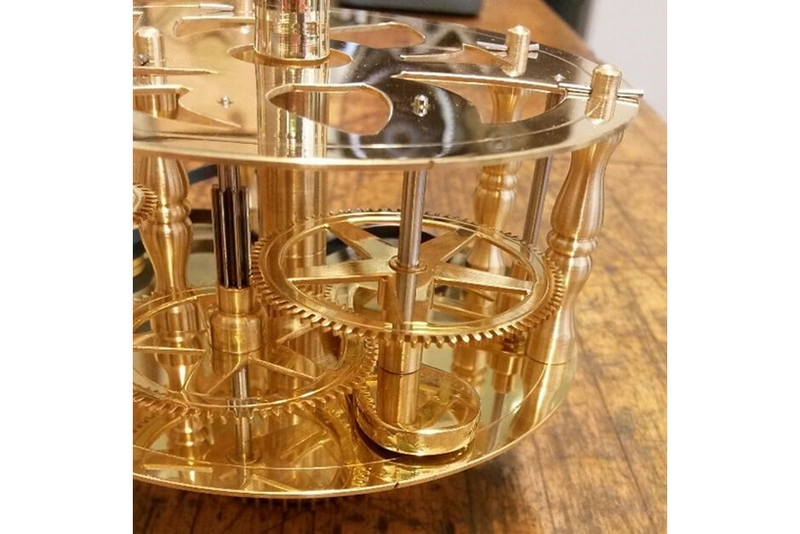
F.P.Journe Young Talent Competition Award goes to Mario Scarpatetti from Switzerland.; photo @F.P.Journe Young Talent Competition/ @fpjourne.com
Kalender Perpeten – Movement with secular calendar based on Mario Scarpatetti’s patented invention
“The idea for this clock with secular perpetual calendar came up in winter 2016, with a moon ball for the moon phase, and a time equation, wanting the clock movement to have a very long power reserve. The heart of the movement is the perpetual calendar, which automatically corrects even the uneven secular years. Controlled by a wheel that turns once every 400 years, the date needs no correction.” – Mario Scarpatetti (Age 29 – Parsonz – Switzerland).
Brief story about the invention of Mario Scarpatetti’s “secular perpetual calendar.”
“In 2013, I made a clock with classic perpetual calendar with a 4-year wheel but something bothered me. The mechanics may be leap years recognize between centuries, but not whether a century or millennium is a leap year or not. I started to think about a mechanism that could recognize whether a century or a millennium has a February 29th or not. In 2013, during a train ride, the solution came to me. My idea is to supplement the mechanics of a well-known perpetual calendar with an additional wheel that turns once every 400 years. The greatest achievement is the ease with which this 400-year wheel is switched.”
“Shortly afterwards, I was asked whether I would make a movement for the drive of a planetarium and I put my sketches in pending. In 2016, I finally found the time to design a clock with my own perpetual calendar. I started milling the first wheels in 2016 and the construction of the large movement lasted until summer 2018. During the production, in March 2018, I applied for a patent for my invention by the Swiss Federal Institute of Intellectual Property relating to a 400-year wheel and its indexing. My 400-year wheel received in 2018 the patent N° CH 00400/18.”
All parts of the movement, with the exception of four ball-bearings (Kugellager), were traditionally handmade. Most of the parts were made from brass and steel sheets, as well as brass and steel round bars. For the manufacturing of the movement, Scarpatetti has made all parts without NC and CNC-controlled machines. The movement can be dismantled into 478 individual parts. It consists of a total of 570 components.
Mario Scarpatetti’s secular perpetual calendar explained in detail
“All components, such as the rocker switch (Schaltwippe), are exactly the same as in a known perpetual calendar with a 4-year wheel. The 4-year wheel is the first on my calendar that looks different. All 4 deepenings for February have the same depth. The 4-year wheel therefore does not decide whether February has 28 or 29 days. A shift finger (Schaltfinger) is pressed into the front of the 4-year wheel. This finger thus makes one turn every 4 years and switches the 400-year wheel further. The whole thing also works with two shift fingers, as I described in my patent application.
The 400-year wheel had to be manufactured slightly differently. The wheel is switched twice every 4 years, but not regularly every two years. The placement takes place a few months before a leap year (e.g. between April 2019 and January 2020).
The next placement takes place after February of a leap year (e.g. between April 2020 and January 2021). The 400-year wheel then remains in the same position for about 3 years. Only then does the next switching take place (in our example between April 2023 and January 2024). The switching is very energy-saving over several months. The shift finger grips in the outer gearing of the 400-year wheel (a fine gearing with 200-teeth). A pawl also grips in the same gearing for positioning.
The inner scope of the wheel has 97 elevations. The nose of the rocker switch of the perpetual calendar feels the 400-year wheel every February. If the nose falls into a gap, the clock switches from February 28 th to March 1st. If the nose rests on one of the 97 elevations, the mechanics switches from February 28 th to February 29 th and then to March 1st the following night.
It gets interesting now at a century or a millennium. In the case of the gear wheel, there is a very large gap at the point where a step would be for three consecutive centuries. At this point, instead of two gaps, the gear wheel has only one gap in the width of three divisions next to a step. Only in the fourth century is there an elevation where the nose feels the century. Namely for those centuries which are a leap year. That is why the 400-year wheel has 97 and not 100 steps inside”.
A small example of the intelligibility:
- In February 2021, the nose of the rocker switch falls into a gap. The clock switches from February 28, 2021 to March 1, 2021.
- In February 2024, the nose of the rocker switch is on one elevation. The clock switches from February 28, 2024 to February 29, 2024.
- In February 2100, the nose of the rocker switch falls in the middle of a wide gap. The clock switches from February 28, 2100 to March 1, 2100.
- In February 2400, the nose of the rocker switch is on one stage. The clock switches from February 28, 2400 to February 29, 2400.
The Gregorian calendar is based on a cycle of 400 years, after one turn of my wheel the game starts all over again, just like with the Gregorian calendar. The owner of the clock never needs to adjust the date.

